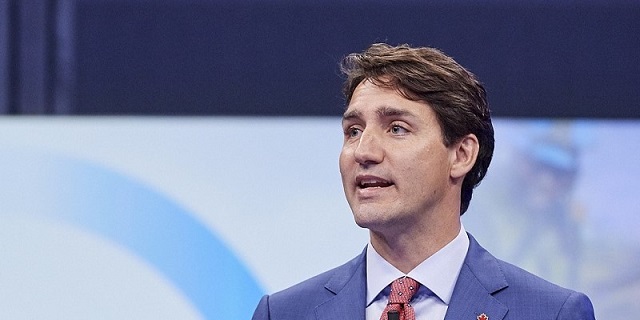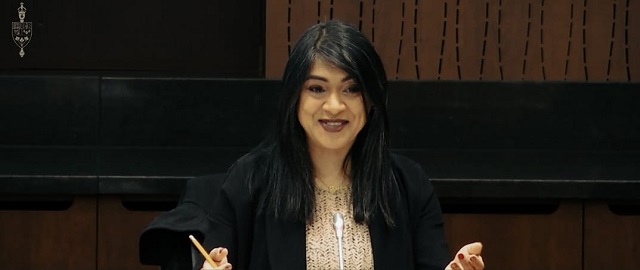Community
Red Deer College begins it’s transition to university

This article was first published as a column by RDC President & CEO Joel Ward in the Red Deer Advocate on April 7, 2018
On March 1, the Decision was rendered. To a capacity audience, Premier Rachel Notley and Minister of Advanced Education, Marlin Schmidt, announced that RDC has been given
approval to transition to become a recognized university.
The decision to enable degree-granting, and the creation of a pathway to full University status will impact the economic, social and cultural growth of our region in ways we cannot
yet imagine. The decision acknowledges the growth, and evolution, of RDC as a mature academic institution. Our history of delivering collaborative degrees for over 25 years is a
testament to our capacity to do more, and do more we will. So, what kind of University will we become and how long will it take? To serve our learners, our communities, and prepare for the jobs of tomorrow, we are defining ourselves as a Comprehensive Regional Teaching University. This means we will continue to do everything we do now, with the addition of granting our own degrees.
We will continue to offer trades, certificates, diplomas, graduate certificates and applied degrees, as well as collaborative degrees with our other University partners. And we will grant our own degrees – ones that make sense for our region and complement our current programs. With a focus on applied learning, students will practice what they learn to solve real-world problems through co-ops, practicums, and projects that connect them to businesses, industry and not-for-profit sectors. With an emphasis on work integrated learning, students will become innovators, entrepreneurs and problem solvers with the communication skills necessary to navigate an increasingly complex world.
As we determine what new degrees, certificates and diplomas our region will need we must consider the needs of our communities. Clearly though, STEM (science, technology,
engineering and math) programs will be considered. We will continue with degrees in education, nursing, business, as well as social sciences and the humanities. As our region
grows we will grow with it and we will create programs that support and enhance diversification and prepare students for the jobs of the future.
The transition will take time – we estimate it will take approximately three to five years to complete the necessary work to become a recognized university. As we begin the work of
transitioning to University status, we know we will need to be patient, thorough, and inclusive as we map the path. We established a transition team to work with the Government and the Ministry of Advanced Education to begin the work in earnest. We are grateful for the support of the Government of Alberta, including Premier Notley, Minister Schmidt and our local MLAs, Barb Miller and Kim Schreiner.
On behalf of RDC, I wish to acknowledge and thank our current and past students, our faculty and staff, and our communities and partners for your unwavering support of this College and our quest to achieve degree-granting status. The decades of work you put in, and the support you’ve shown, led to a decision that will impact our region for generations to come.
Community
SPARC Red Deer – Caring Adult Nominations open now!

Red Deer community let’s give a round of applause to the incredible adults shaping the future of our kids. Whether they’re a coach, neighbour, teacher, mentor, instructor, or someone special, we want to know about them!
Tell us the inspiring story of how your nominee is helping kids grow up great. We will honour the first 100 local nominees for their outstanding contributions to youth development. It’s time to highlight those who consistently go above and beyond!
To nominate, visit Events (sparcreddeer.ca)

Addictions
‘Harm Reduction’ is killing B.C.’s addicts. There’s got to be a better way

From the Frontier Centre for Public Policy
B.C. recently decriminalized the possession of small amounts of illicit drugs. The resulting explosion of addicts using drugs in public spaces, including parks and playgrounds, recently led the province’s NDP government to attempt to backtrack on this policy
Fuelled by the deadly manufactured opioid fentanyl, Canada’s national drug overdose rate stood at 19.3 people per 100,000 in 2022, a shockingly high number when compared to the European Union’s rate of just 1.8. But national statistics hide considerable geographic variation. British Columbia and Alberta together account for only a quarter of Canada’s population yet nearly half of all opioid deaths. B.C.’s 2022 death rate of 45.2/100,000 is more than double the national average, with Alberta close behind at 33.3/100,00.
In response to the drug crisis, Canada’s two western-most provinces have taken markedly divergent approaches, and in doing so have created a natural experiment with national implications.
B.C. has emphasized harm reduction, which seeks to eliminate the damaging effects of illicit drugs without actually removing them from the equation. The strategy focuses on creating access to clean drugs and includes such measures as “safe” injection sites, needle exchange programs, crack-pipe giveaways and even drug-dispensing vending machines. The approach goes so far as to distribute drugs like heroin and cocaine free of charge in the hope addicts will no longer be tempted by potentially tainted street drugs and may eventually seek help.
But safe-supply policies create many unexpected consequences. A National Post investigation found, for example, that government-supplied hydromorphone pills handed out to addicts in Vancouver are often re-sold on the street to other addicts. The sellers then use the money to purchase a street drug that provides a better high — namely, fentanyl.
Doubling down on safe supply, B.C. recently decriminalized the possession of small amounts of illicit drugs. The resulting explosion of addicts using drugs in public spaces, including parks and playgrounds, recently led the province’s NDP government to attempt to backtrack on this policy — though for now that effort has been stymied by the courts.
According to Vancouver city councillor Brian Montague, “The stats tell us that harm reduction isn’t working.” In an interview, he calls decriminalization “a disaster” and proposes a policy shift that recognizes the connection between mental illness and addiction. The province, he says, needs “massive numbers of beds in treatment facilities that deal with both addictions and long-term mental health problems (plus) access to free counselling and housing.”
In fact, Montague’s wish is coming true — one province east, in Alberta. Since the United Conservative Party was elected in 2019, Alberta has been transforming its drug addiction policy away from harm reduction and towards publicly-funded treatment and recovery efforts.
Instead of offering safe-injection sites and free drugs, Alberta is building a network of 10 therapeutic communities across the province where patients can stay for up to a year, receiving therapy and medical treatment and developing skills that will enable them to build a life outside the drug culture. All for free. The province’s first two new recovery centres opened last year in Lethbridge and Red Deer. There are currently over 29,000 addiction treatment spaces in the province.
This treatment-based strategy is in large part the work of Marshall Smith, current chief of staff to Alberta’s premier and a former addict himself, whose life story is a testament to the importance of treatment and recovery.
The sharply contrasting policies of B.C. and Alberta allow a comparison of what works and what doesn’t. A first, tentative report card on this natural experiment was produced last year in a study from Stanford University’s network on addiction policy (SNAP). Noting “a lack of policy innovation in B.C.,” where harm reduction has become the dominant policy approach, the report argues that in fact “Alberta is currently experiencing a reduction in key addiction-related harms.” But it concludes that “Canada overall, and B.C. in particular, is not yet showing the progress that the public and those impacted by drug addiction deserve.”
The report is admittedly an early analysis of these two contrasting approaches. Most of Alberta’s recovery homes are still under construction, and B.C.’s decriminalization policy is only a year old. And since the report was published, opioid death rates have inched higher in both provinces.
Still, the early returns do seem to favour Alberta’s approach. That should be regarded as good news. Society certainly has an obligation to try to help drug users. But that duty must involve more than offering addicts free drugs. Addicted people need treatment so they can kick their potentially deadly habit and go on to live healthy, meaningful lives. Dignity comes from a life of purpose and self-control, not a government-funded fix.
Susan Martinuk is a senior fellow at the Frontier Centre for Public Policy and author of the 2021 book Patients at Risk: Exposing Canada’s Health Care Crisis. A longer version of this article recently appeared at C2CJournal.ca.
-

 COVID-196 mins ago
COVID-196 mins agoJapanese study shows disturbing increase in cancer related deaths during the Covid pandemic
-

 Business2 days ago
Business2 days agoBusiness investment key to addressing Canada’s productivity crisis
-

 International2 days ago
International2 days agoBrussels NatCon conference will continue freely after court overturns police barricade
-

 Jordan Peterson2 days ago
Jordan Peterson2 days agoJordan Peterson slams CBC for only interviewing pro-LGBT doctors about UK report on child ‘sex changes’
-

 Business2 days ago
Business2 days agoFederal budget fails to ‘break the glass’ on Canada’s economic growth crisis
-

 Frontier Centre for Public Policy2 days ago
Frontier Centre for Public Policy2 days agoThe Smallwood solution
-

 Agriculture2 days ago
Agriculture2 days agoBill C-282, now in the Senate, risks holding back other economic sectors and further burdening consumers
-

 Alberta1 day ago
Alberta1 day agoDanielle Smith warns arsonists who start wildfires in Alberta that they will be held accountable





